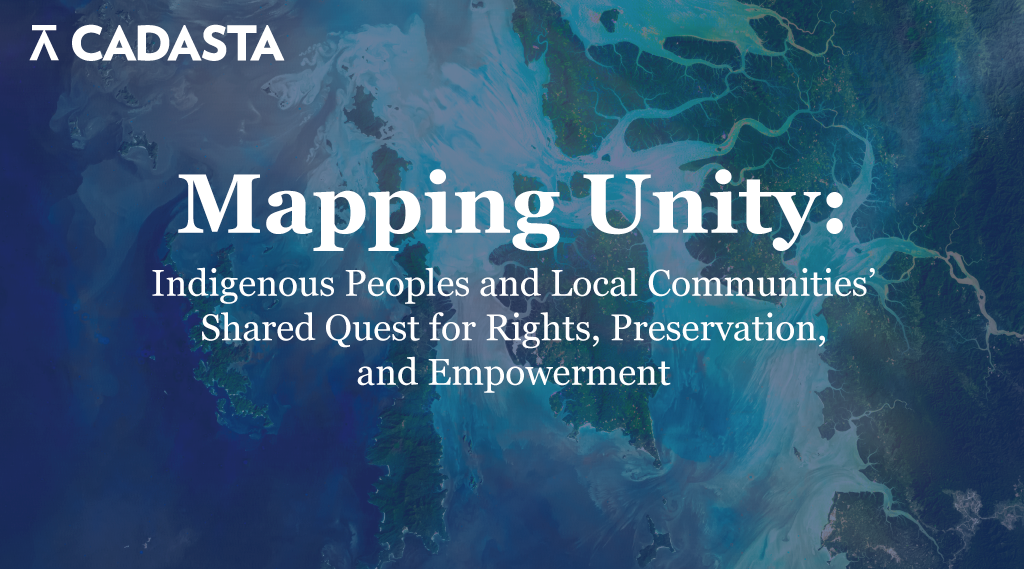Early this year, Cadasta Foundation and Open Knowledge announced a joint-initiative to explore open land data. Through sponsoring a fellowship, Cadasta and Open Knowledge aim to build consensus on the definition of open data in land for the Global Open Data Index, identify key land datasets, and expand the network of advocates dedicated to strengthening property rights data. Now we are excited to kick-off this project and share some of the issues we’re hoping to tackle over the next several months.
Within the land sector, there has broadly been emphasis on the value and advancement that open geospatial data can have in increasing the accuracy of mapping, and helping communities without formal land recognition begin to document their claims at the local level. Open data has also been touted as a tool for the land monitoring community, with initiatives, such as the LandPortal that make data from World Bank and FAO sources available for bulk download. Such initiatives also drive the need for interoperability, and data standards of reports and terminology, through relationships with local partners. While the openness of these types of data have clear value, little attention has been put on the accessibility and reliability of government datasets, such as registry and parcel information.
Our first instinct for why this might be is simple: getting access to open, standardized and reliable government information is hard. As is the case in any sector with politically sensitive government data, there are significant technical, institutional, and in many cases, financial, barriers that impede the release of such data.
Beyond the common capacity and resource constraints of governments that make standardizing, releasing and maintaining open data difficult, one of the technical issues specific to land is the issue of jurisdiction. The structures responsible for maintaining cadastral data, which includes boundaries, titles/deeds and sales data, may sometimes be at the subnational level. In the U.S., cadastral systems are maintained at the county level — meaning that there are 3,144 different jurisdictions with their own cadastres, data collection methods and unique parcel numbers. Aggregating, standardizing, and releasing this data can represent a major resource burden for governments. This challenge is only exacerbated by the fact that the responsibility to manage land is sometimes split between the survey department responsible for mapping and the land agency that holds legal ownership records. Furthermore, in many emerging countries, there is simply a scarcity of any reliable, formal property rights information at all.
The incorporation of of informal property rights claims, which in many places vastly exceeds formally recognized property rights, also presents a technical challenge in the standardization of land data. Titles or deeds are registered with the land agency and could provide the necessary information on the property’s value, the owner and the terms of tenure. However, releasing land information that only reflects registered land could leave out a large portion of marginalized communities occupying land held under customary tenure. Documentation of this tenure is not uniform. Namati, a grassroots legal empowerment organization, works with local communities in parts of Africa and Asia to collect MOUs from neighbors to confirm land boundaries, map their land and document land governance structures. The ultimate goal is to use this evidence to get formal land registration and enhance protection of the community lands. But how can you square all of these documents with the formal land registry to release a dataset that shows the complete picture?
Beyond these constraints, some national-level actors stand to benefit from the opacity of land data. For example, land agencies may view this data as a revenue source, charging a modest fee to realtors for access to cadastral data. In Jamaica, the National Land Agency is responsible for generating 75% of their own revenue through charging fees to the public and makes up part of this by charging $600 USD per year for this access to cadastral data. The U.K. had a similar fee structure for access to property sales data that brought in Her Majesty’s Land Registry £600,000 per year up until March 2012. Since then, HM Land Registry has openly released the data to a boom of proptech start ups interested in using the data.
Additionally, corruption is rampant throughout the land sector. According to Transparency International, 1 in 5 people across the globe have paid a bribe for land services, making it the third most corrupt government service with regards to bribery rates. Open data could enhance transparency of petty corruption, bring the concentration of property held exclusively among elites and public officials to light, or reveal investments that may conflict with the individual or community tenure holders.
Finally, the issue of privacy poses a legitimate concern to governments as they decide whether or not to open a dataset. This thorny topic also presents a particular challenge for us as we build consensus on which datasets should be open for the Global Open Data Index, including how much detail surrounding ownership should be included. There are certainly vulnerable communities whose food, cultural, and land and resource security may be at risk when more information about their tenure is open. However, there may also be cases where information about corporate land ownership involved in large-scale agriculture may be in the public interest. Navigating this nuance and consulting with stakeholders from government, the international development community and local communities will be crucial in determining what data should be open.
Yes, there are obstacles barring the government’s release of data, but potential benefits of opening up cadastral datasets are also becoming clear. In the Jamaican case referenced above, property valuation data is so poor that the Jamaican government is estimated to be collecting only about 10% of the total revenue from property tax it should be when compared to parts of Western Europe and the U.S. By opening up this data and enabling verification, the Jamaican government could collect far more property tax, which would outweigh the modest income generated from selling the data — not to mention the potential market benefits that accompany reliable property information. By working with the NLA and the Jamaican Ministry of Finance to open up parcel, sales, valuation and property tax data, Itabo.org is creating a proptech site that aggregates all this information to reflect the market’s actual value. The success of proptech sites like Zillow and itabo.org in bringing greater transparency, and stimulating growth within the market, is firmly hinged upon the accessibility and availability of land data. It is still very early days for open data projects like itabo.org, but we hope to track these types of initiatives, as well as those that use open data to enhance tenure security and advance the public interest in land throughout this project.
In the coming months, we will dive deep into these challenges to define open land data in a way that addresses the nuances of varying and complex land administration systems. However, the knowledge and experience of both the global open data community and the land sector will be necessary in understanding how these issues play out in different contexts so that our ultimate product is applicable across all countries. That is why we need you help. If you are an open data advocate, have experience working with national land agencies or are just interested in getting involved with government land data, we want to hear from you! You can reach us at: lferris@cadasta.org. We look forward to hearing from you.







